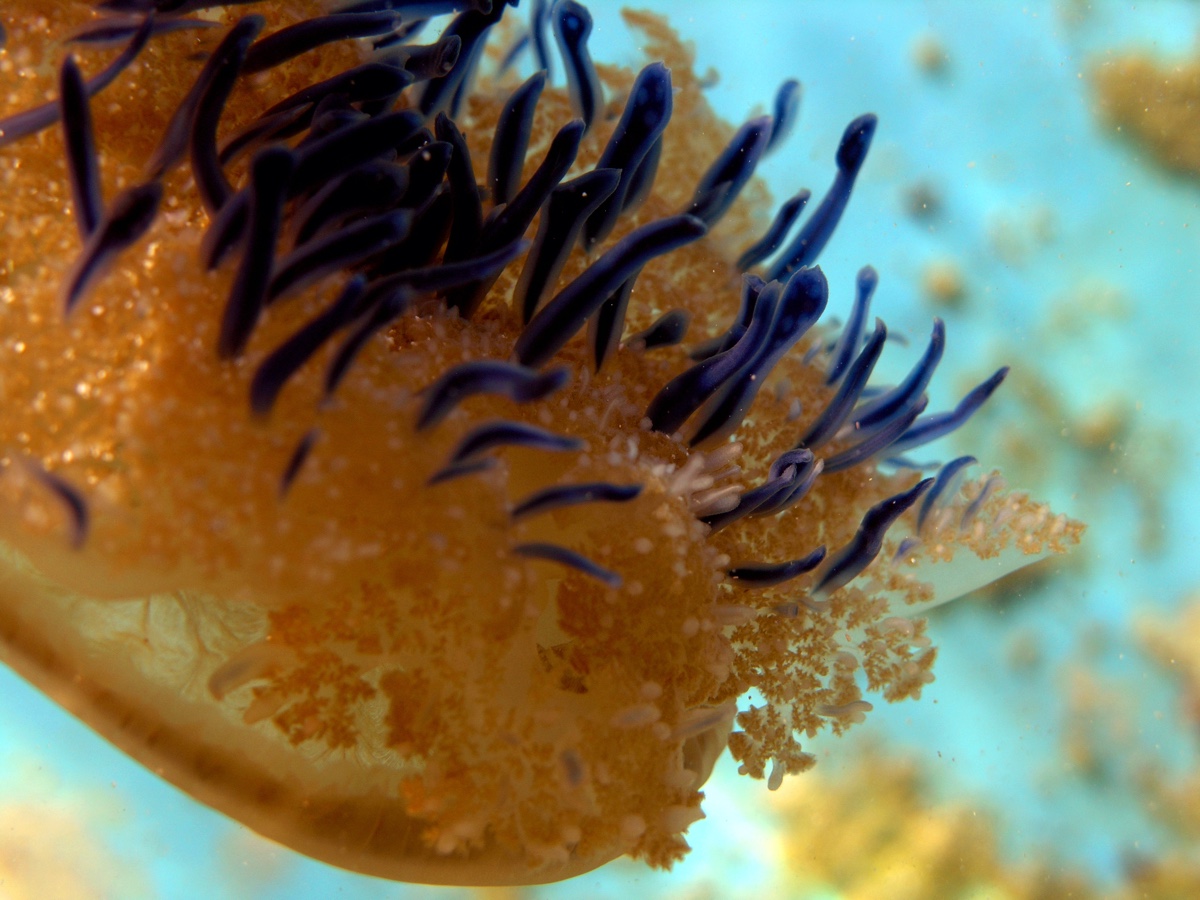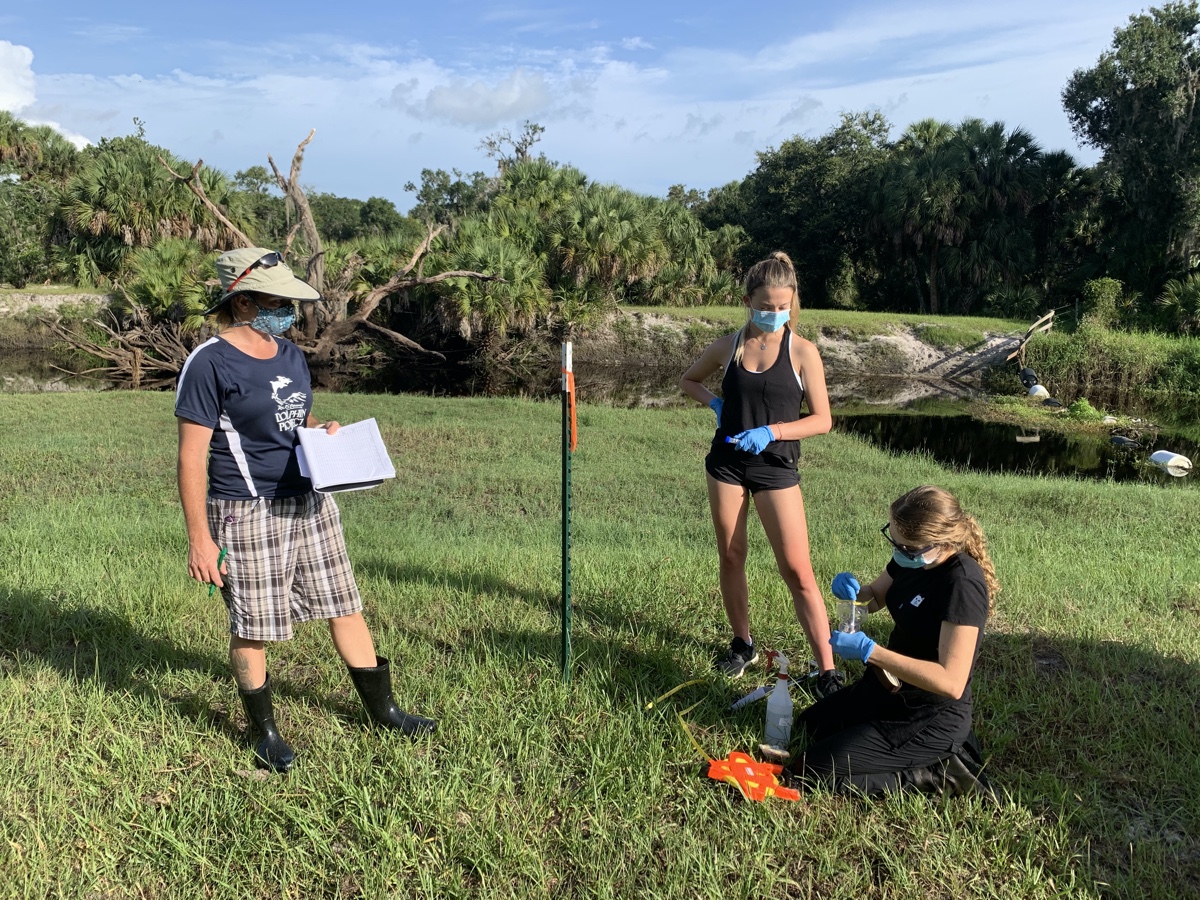Microbial ecology of symbiosis, climate change, and Indigenous and sustainable practices

Jump to:
Research Overview
I am a microbial ecologist with research interests at the nexus of symbiosis, climate change, and Indigenous and sustainable practices. I study how host-associated microbiota are affected by climate change, and the relationships between microbial diversity and land/water management. My projects are embedded in frameworks of community- and place-based research to advance social equity by including local stakeholders, particularly in Indigenous and sustainable managers.
Anthropogenic stressors threaten host-associated microbiota, presenting critical risks to the interdependent health of hosts, microbes, and ecosystems. I use fieldwork and experimental biology (host-symbiont physiology, genomics, and experimental evolution) to understand how microbial and ecosystem health are connected in sustainable management practices and in a changing climate.
Grants and Fellowships
My lab’s research at New College of Florida is generously funded by The J. Stuart and Elizabeth Moore Charitable Foundation, the New College Student Research and Travel Grants, and the New College Faculty Development Fund.
My postdoctoral research at Emory University was generously funded by NIH-IRACDA.
My Ph.D. research at Penn State University and Masters research at Universidad Nacional Autónoma de México (National Autonomous University of Mexico) was generously funded by CONACYT (Consejo Nacional de Ciencia y Tecnología / National Council of Science and Technology in México).
Indigenous and sustainable agroecological practices
Milpa is a millennia-old agricultural polycrop system from Mesoamerica that continues to be widely used in México. Milpa is known to support sustainably large crop yields without pesticides or fertilizers, even in nutrient-poor soil, yet little is known about the underlying mechanisms of these benefits. I studied the health of farm soil exposed to Milpa polycrops and monocrops and discovered that the polycrop configuration significantly inhibited the growth of two bacterial strains in soil: a Burkholderia strain symbiotic with Anasa tristis (the squash bug, an agricultural pest) and a plant pathogenic Serratia strain that is the primary causal agent of cucurbit yellow vine disease (CYVD). This research begins to explore the unknown mechanisms underlying the anti-microbial properties of Milpa. To better understand the impacts of inhibited microbes as observed in Milpa soil, I used transcriptomics in a controlled experiment to artificially remove obligate symbionts (Candidatus Ishikawaella capsulata) and observed detrimental effects to the host’s (Megacopta cribraria) development pathways and immune system. In an ongoing experimental evolution experiment, I am discovering that mode of transmission of the symbiont affects fitness of the symbiont (Burkholderia) and its host (Anasa tristis), a potential path to disrupting host-microbe relationships in agricultural pests without using pesticides.
Related publications:
- Effect of diet on symbiont density within an invasive agricultural pest (in prep)
- Effect of presence/absence of obligate symbionts in Kudzu bugs (Megacopta cribaria) (in prep)
- Evolving Burkholderia symbionts in the presence and absence of their insect host (in prep)
- Maravillas, K. E., Diaz-Almeyda, E., & Gerardo, N. (2019). Bacterial Growth in Milpa Polyculture and Monoculture Soils [Emory University]. Journal of Student Research.
Symbiosis in marine invertebrates (coral reefs, jellyfish, and sea anemone)
My lab studies symbiosis in marine invertebrates and how they respond and adapt to anthropogenic stressors. As a model organism in the lab, we use the upside-down jellyfish Cassiopea xamachana (the host) and Symbiodiniaceae (the symbiont; a photosynthetic algae). The jellyfish perfect for undergraduate thesis research compared with corals because the jellyfish are easier and faster to grow in the lab.

Coral reefs are at risk to become the first ecosystem to collapse as a consequence of climate change. Our research aims to understand how coral reef symbiosis is disrupted by anthropogenic stressors, and to explore the mechanisms of acclimation to a warming ocean.

Close-up view of coral polyps.
Coral reefs are built by colonies of coral polyps, small marine invertebrates (cnidarians, like jellyfish and sea anemone). In a symbiotic relationship, corals (the host) provide Symbiodiniaceae (the symbiont; a photosynthetic algae) with a home and a supply of inorganic molecules, while the algae provide corals with nutrient byproducts from photosynthesis. Increases in ocean temperature, driven by climate change, prompts the algal symbiont to leave the coral host when temperatures become inhospitable. Disrupting this symbiotic relationship can ultimately lead to coral bleaching, or worse, massive coral die-offs.
We use experimental biology (host-symbiont physiology, genomics, and experimental evolution) and fieldwork approaches to investigate the mechanisms of thermotolerance in coral-algal symbiosis. Our broader aims include understanding how to mitigate stress and prevent bleaching events, and informing coral restoration efforts in the field.
Project 1a: Thermotolerance of Symbiodiniaceae
My lab explores the thermal limits of different species of Symbiodiniaceae dinoflagellates using physiological measurements in experimental settings. Symbiodiniaceae are physiologically diverse with variance in thermotolerance and thermosensitivity. In other words, thermotolerance is not a phylogenetically conserved trait. My lab is also investigating the microbial communities associated with Symbiodiniaceae and their possible roles in thermotolerance.

Image source: Wikimedia Commons.
Related publications:
- Stability of microbial communities associated with thermotolerant Symbiodinium in culture (in prep)
- Mansour, J. S., Pollock, F. J., Díaz-Almeyda, E., Iglesias-Prieto, R., & Medina, M. (2018). Intra-and interspecific variation and phenotypic plasticity in thylakoid membrane properties across two Symbiodinium clades. Coral Reefs, 37(3), 841-850.
- Díaz-Almeyda, E. M., Prada, C., Ohdera, A. H., Moran, H., Civitello, D. J., Iglesias-Prieto, R., Carlo, T. A., LaJeunesse, T. C., & Medina, M. (2017). Intraspecific and interspecific variation in thermotolerance and photoacclimation in Symbiodinium dinoflagellates. Proceedings of the Royal Society B: Biological Sciences, 284(1868), 20171767.
- Díaz-Almeyda, E., Thomé, P. E., El Hafidi, M., & Iglesias-Prieto, R. (2011). Differential stability of photosynthetic membranes and fatty acid composition at elevated temperature in Symbiodinium. Coral Reefs, 30(1), 217-225.
Project 1b: Symbiodiniaceae genomics
My lab explores the mechanisms driving temperature acclimation and adaptation in coral-algal symbiosis. To answer these questions, we challenge Symbiodinium to high water temperatures and analyze their transcriptomic responses at different time points. For Symbiodinium microadriaticum, our results show that short-term and long-term stress can trigger different responses. Short-term stress appears to be survivable, while long-term stress is detrimental to the symbiosis and risks permanent damage or death.
In addition to improving our understanding of the mechanisms behind thermotolerance, my lab has contributed to understanding the chronobiology of Symbiodinium through our transcriptomic work. Understanding chronobiology is crucial for explaining the coordination of coral-algal symbiosis.
Related publications:
- Temporal transcriptomic response of Symbiodinium microadriaticum (CassKB8) under high temperature acclimation (in prep)
- Sorek, M., Díaz-Almeyda, E. M., Medina, M., & Levy, O. (2014). Circadian clocks in symbiotic corals: the duet between Symbiodinium algae and their coral host. Marine genomics, 14, 47-57.
Project 1c: Genomics of host-microbe interactions in coral reef ecosystems
Host-microbe interactions are key to understanding the health of coral reef ecosystems. My lab is investigating the mechanisms behind the establishment of coral-algal symbiosis. Using experimental biology, we explore the transcriptomic response of the host to diverse symbionts at different developmental stages. We focus on Orbicella faveolata, a crucial reef-building coral that is susceptible to mass bleaching events. Our research shows that the coral host’s transcriptome can be affected in different ways based on: 1) the host’s developmental stage when exposed to the algal symbiont; and 2) the species of algal symbiont.

Colony of Orbicella faveolata coral.
My lab also uses the upside-down jellyfish Cassiopea xamachana as a model organism to explore questions of host-microbe interactions. Cassiopea xamachana is a cnidarian, like coral, and is also symbiotic with Symbiodiniaceae, but is much easier to grow in laboratory conditions compared with coral. This makes Cassiopea xamachana an excellent model for undergraduate students to learn experimental biology and to design and conduct their own experiments.

The upside-down jellyfish Cassiopea xamachana.
Related publications:
- Alterations in transcriptional and developmental regulation: Evolutionary implication of symbiosis in Cassiopea xamachana (in prep)
- Hartmann, A. C., Marhaver, K. L., Klueter, A., Lovci, M. T., Closek, C. J., Diaz, E., Chamberland, V. F., Archer, F. I., Deheyn, D. D., Vermeij, M. J. A., & Medina, M. (2019). Acquisition of obligate mutualist symbionts during the larval stage is not beneficial for a coral host. Molecular ecology, 28(1), 141-155.
- O’Rourke, A., Ohdera, A., Sunagawa, S., Diaz-Almeyda, E. M., DeSalvo, M. K., Coffroth, M. A., Voolstra, C. R., & Medina, M. (2017). Gene expression of settled and metamorphosed Orbicella faveolata during establishment of symbiosis (No. e3283v1). PeerJ Preprints.
Sustainable land/water management and coastal microbial diversity
I am engaged in longitudinal microbial diversity assessments in coupled human-environment coastal systems, including: the Triangle Ranch Conservation Area that surrounds the Myakka River in Florida; beaches and reefs in the Florida Keys; and sustainable landscape design at the Florida House Institute. I document microbial diversity and generate long-term datasets to support community stakeholders and decision-makers involved in water and land management.

Lab members during fieldwork at the Triangle Ranch Conservation Area.
Rising seas impact coastal microbial diversity
With colleagues in anthropology, botany, geography, and community stakeholders, I assess microbial diversity in ecosystems and archaeological sites projected to be affected by near-term sea level rise. I document microbes associated with tabby (an 18th to early 20th century coastal architectural material made from oyster shells) and other key material substrates at De Soto National Memorial on Florida’s Gulf Coast. Our goal is to inform management practices and contribute to the conservation of coastal heritage sites.
Publications
View my publications at Google Scholar.
Invited Talks
Local students working with local microbes: Understanding the impact of land management practices on microbial communities. First Congregational United Church of Christ, Sarasota, Florida. 2021.
Understanding microbial acclimation and adaptation in a changing world. College of Marine Science, University of South Florida, St. Petersburg. 2019.
Urban microbiome in Florida. Florida House Institute. 2019.
Symbiosis in Marine and Agricultural Systems. Department of Biology, Kennesaw State University. 2016.
Symbiosis in Marine and Agricultural Systems. Agroecology Department, Universidad Autónoma Chapingo, Texcoco, México. 2016.
Symbiosis and biodiversity: Why should we care? Religion and Ecology / Life Systems Collaborative Colloquium, Emory University. 2016.
Can coral reefs survive climate change? An interdisciplinary approach to understanding temperature acclimation. Department of Biology, Emory University. 2016.
Outreach and Media
Sarasota Herald-Tribune. Conservationist Elizabeth Moore funds New College microbiome Project. July 22, 2020.
SRQ Magazine. New College Microbiome Project Receives Major Support from Conservationist Elizabeth Moore. July 21, 2020.
Sarasota Scene Magazine. New College Microbiome Project Receives Major Support from Conservationist Elizabeth Moore. July 21, 2020.
New College News. New College Microbiome Project gains support. July 20, 2020.
Tampa Bay Newswire. New College Microbiome Project Receives Major Support from Conservationist Elizabeth Moore. July 20, 2020.
Researchers of Emory. The Joy Beneath the Rough (Soil). March 15, 2019.